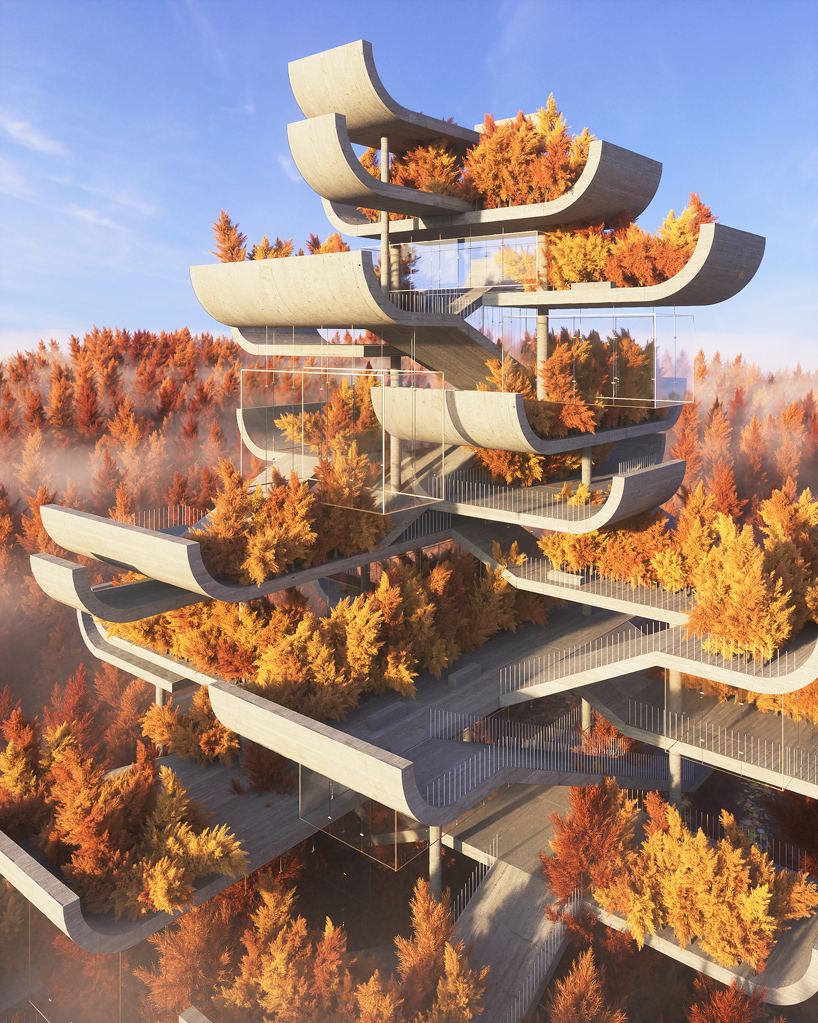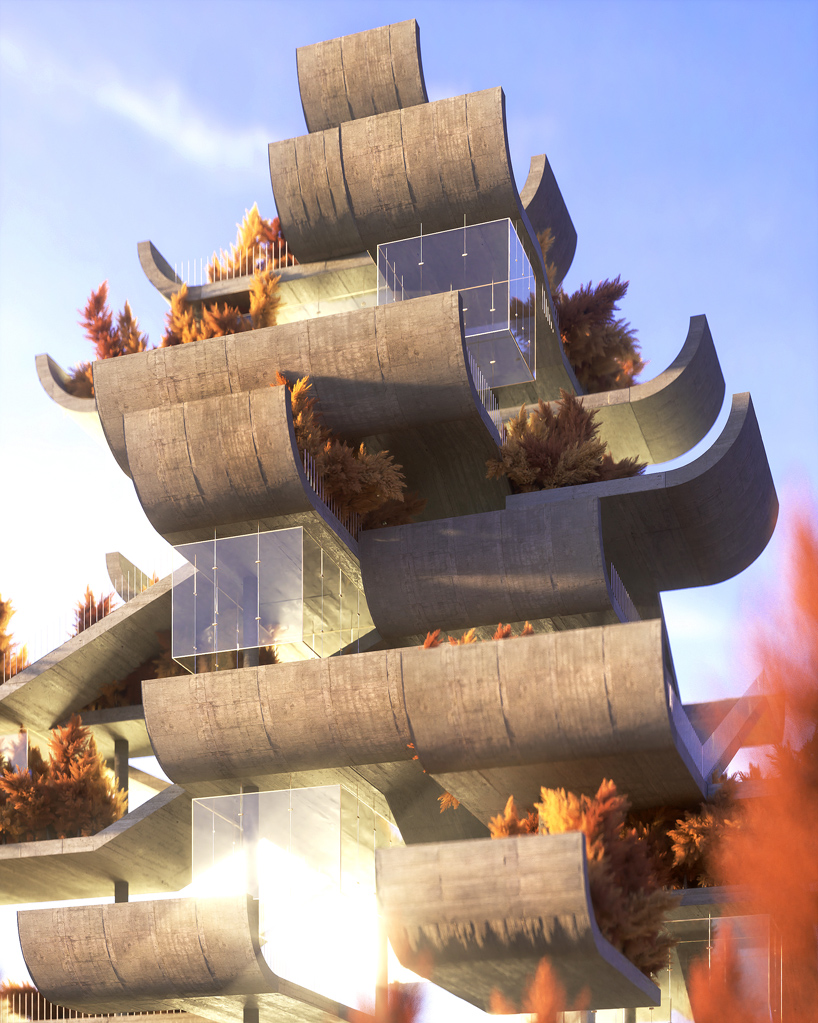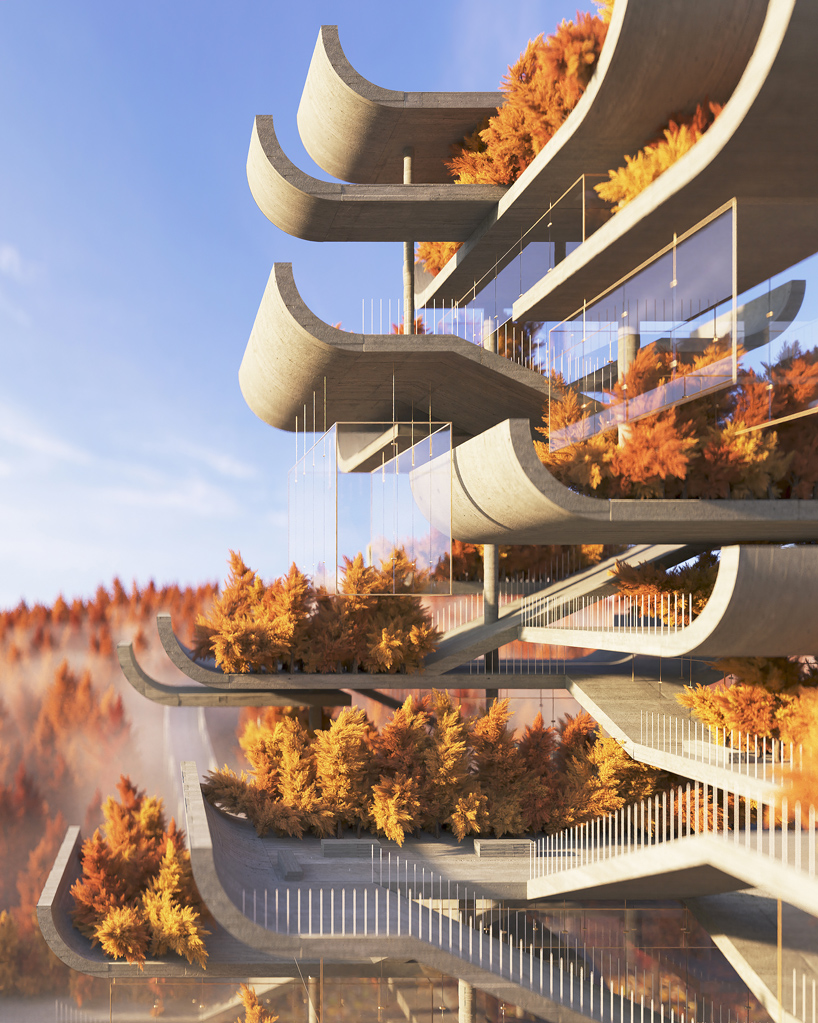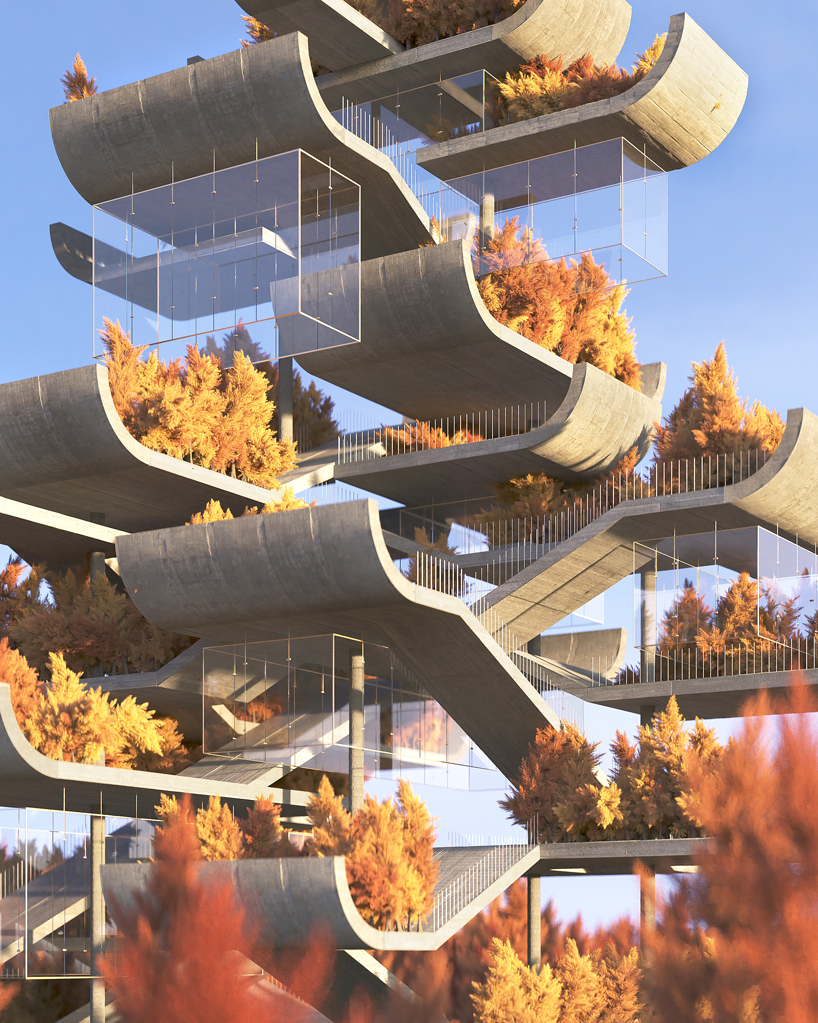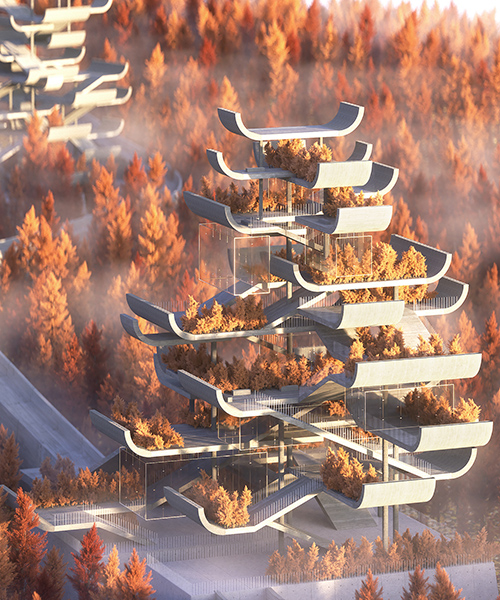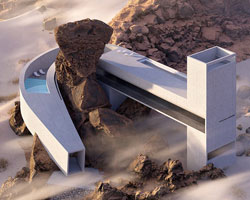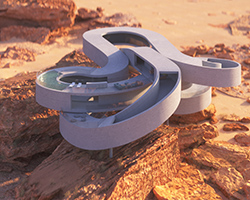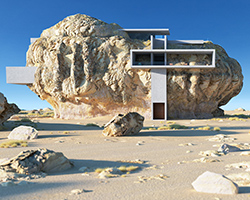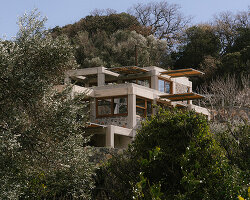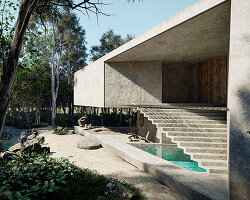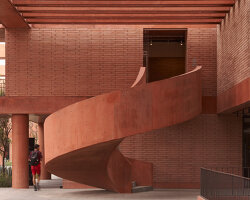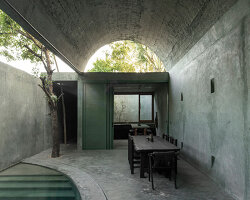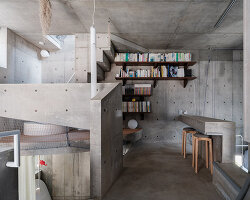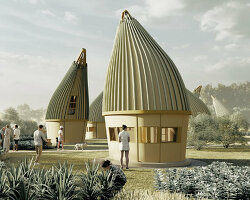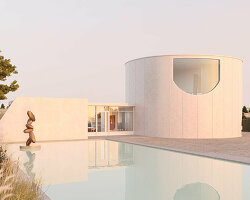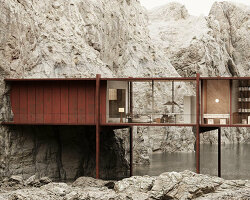characteristically associated with the buddhist temples of east and southeast asia, the ancient typology of the pagoda remains largely untouched by the evolving architectural styles and movements over time. following his travels through china, shanghai-based architect amey kandalgaonkar presents a fictional re-interpretation in concrete of the traditional building style. the designer comments: ‘while the entire world was swept by the modernist movement, china was largely untouched by modernism. so when I visited various ancient chinese monuments, I couldn’t help wonder how a modernist mind would interpret traditional chinese architecture.’
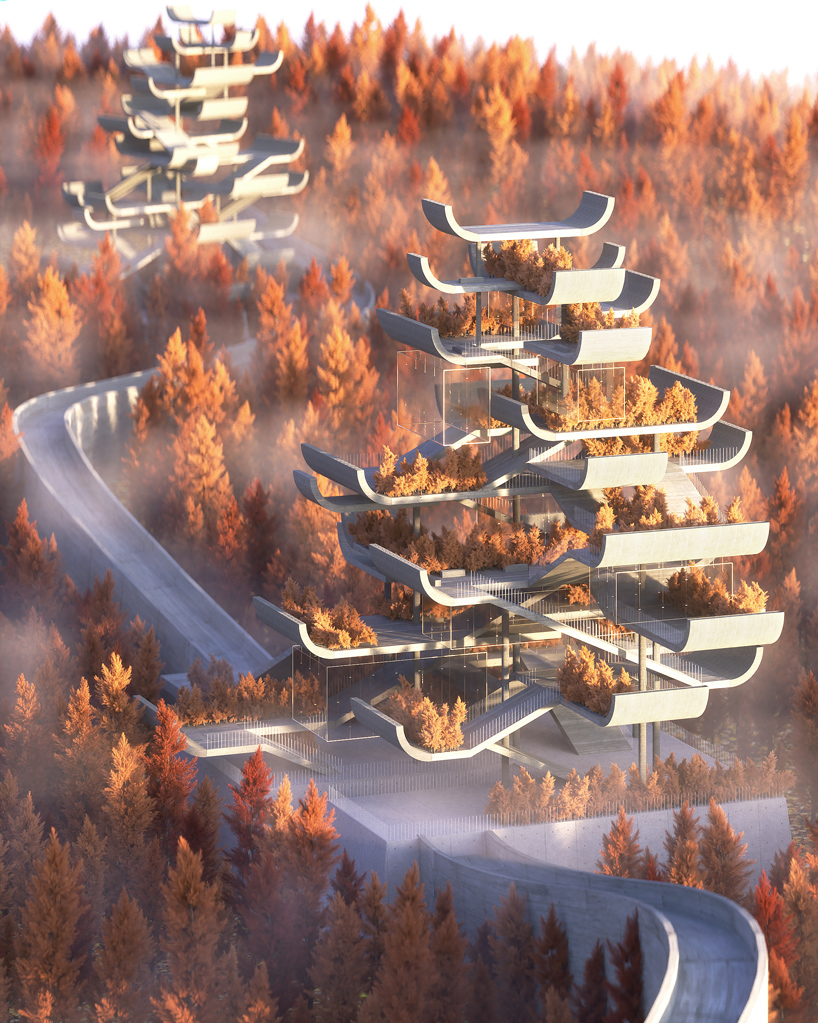
all images by amey kandalgaonkar | @ameyzing_architect
amey kandalgaonkar transforms the structural logic of the ancient pagoda with modernist points while echoing the spirit and image of the traditional style. the supporting walls of the pagoda, typically built of stone, brick or wood, are replaced by a grid of pilotis, or structural concrete columns. the characteristically prominent roof is eliminated and reinterpreted as a flat, open concrete slab which expresses the recognizably flared profile. contrary to the ideals of the mid-twentieth century modernists, the pagoda typology commonly makes use of elaborate ornamentation. kandalgaonkar strips away this intricate, decorative ornament to emphasize the clean logic of the concrete structure which instead houses a layered series of rooftop gardens.
